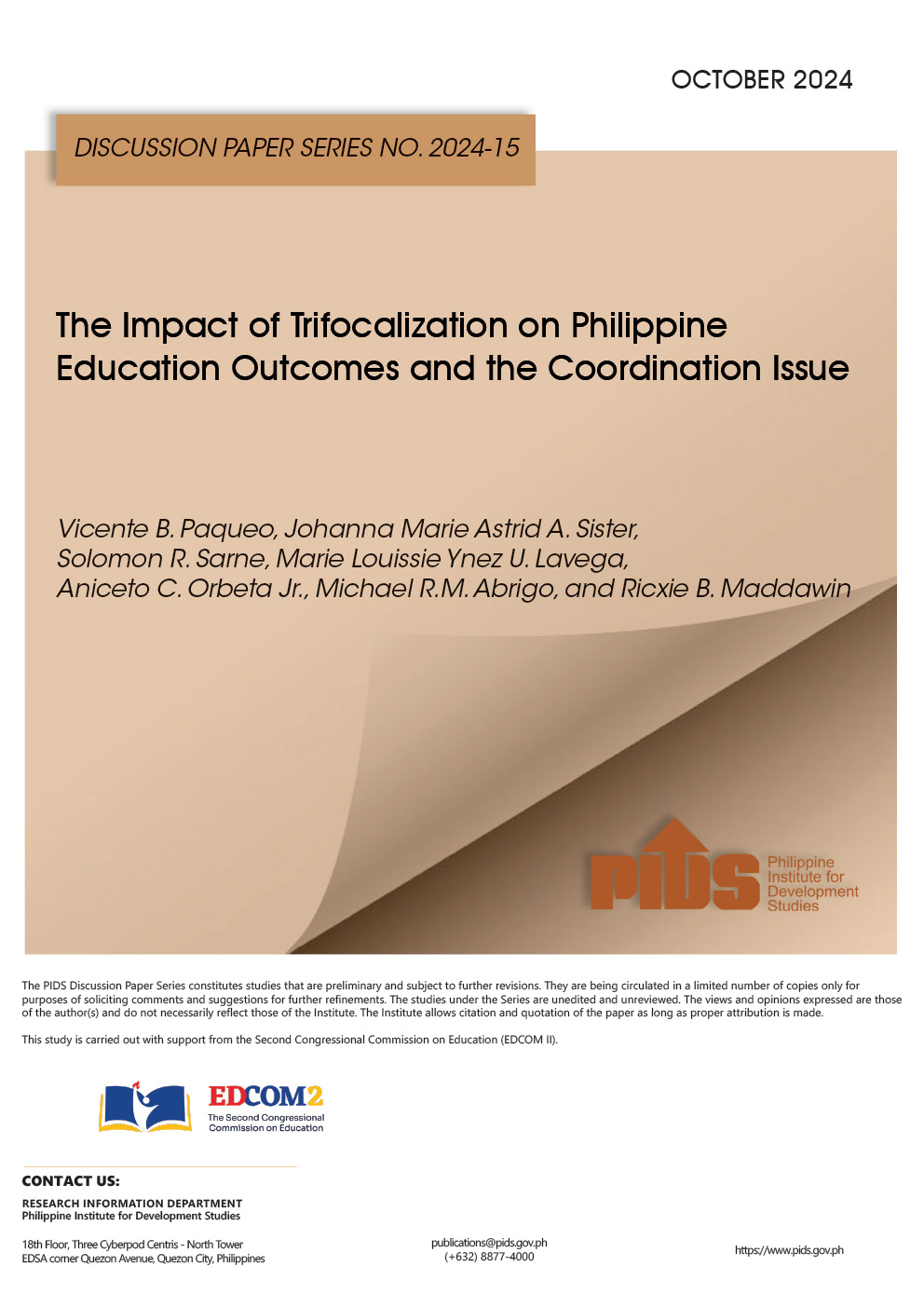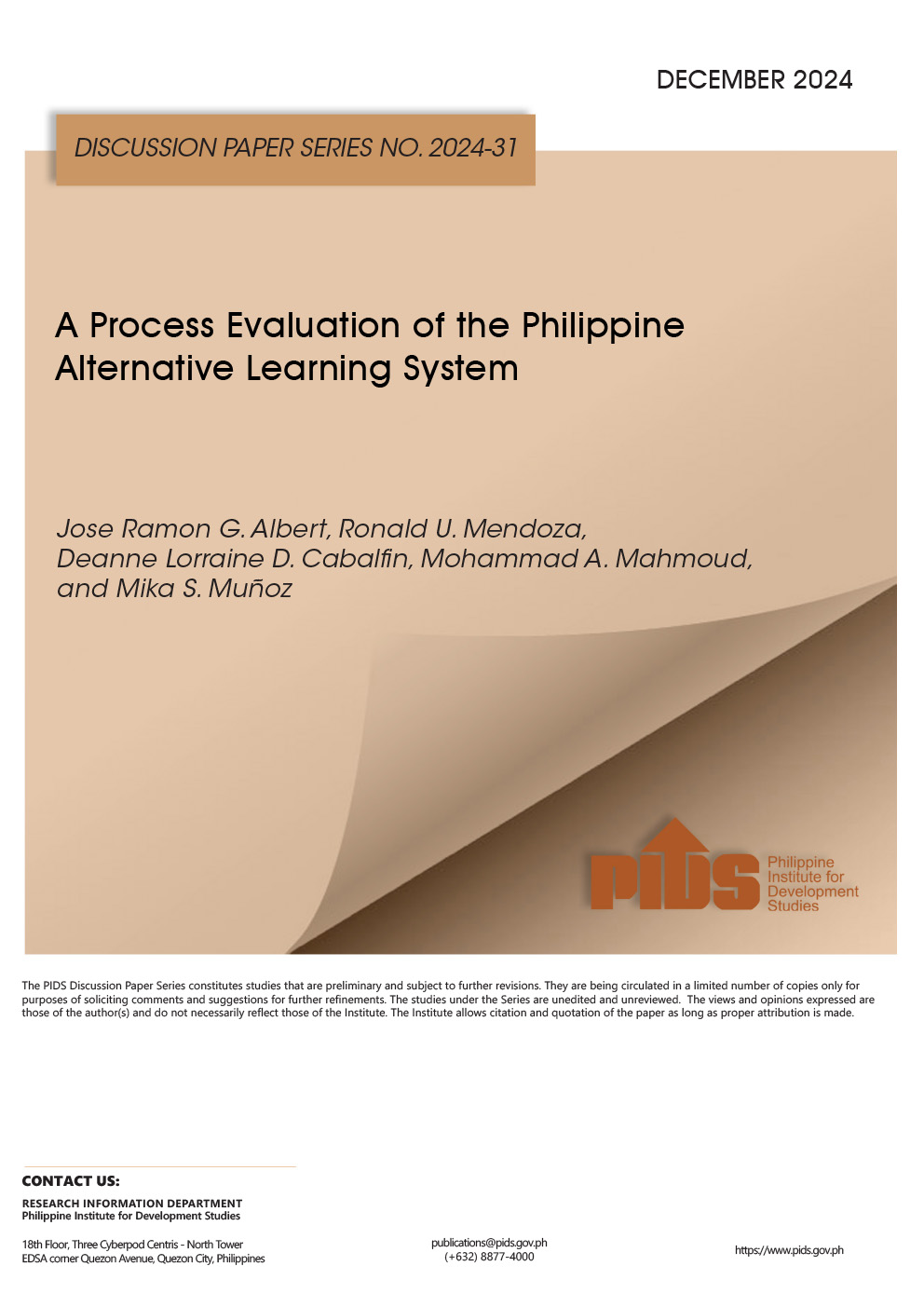HIGHER across-the-board wages run the risk of limiting the employment prospects of less experienced workers and women, according to a paper published by the Philippine Institute for Development Studies (PIDS).
In “The Impact of Legal Minimum Wages on Employment, Income and Poverty Incidence” by researchers Vicente B. Paqueo, Aniceto C. Orbeta, Jr. and Leonardo A. Lanzona, it was found that increases to the legal minimum wage adversely affect the very groups the government is trying to help.
According to the authors, a higher legal minimum wage is “likely to reduce the work hours of the average worker, can be disadvantageous against the very groups that [the wage is] intended to protect, decrease the employment probability of the young, inexperienced, less educated and women laborers and tends to ironically reduce average income and raise household poverty rate.”
In the Philippines, the number of work hours fell and an 8-22% decline in the probability of gaining or retaining employment was seen following an increase in the legal minimum wage.
“Hours of work significantly declined, and the probability of gaining/retaining employment fell by about 8% to 22%, following an increase in the legal minimum wage,” PIDS said.
Meanwhile, disadvantaged groups particularly the young, the inexperienced, the less educated and women showed lower productivity compared to their older, more educated, experienced and male counterparts for jobs.
“Using the fixed effects model alone, an increase in the legal minimum wage of 10% would lead to declines in labor participation rate (negative elasticities) by -6.36% (for all workers), by -5.97% and -3.64% (among teenagers and young adults relative to 50 years old and over), and by -2.36% (no schooling relative to college educated),” said PIDS.
“Further along, larger increases in the legal minimum wage tend to reduce average household income and raise the prevalence rate of poverty.”
“The total income of a household with just one minimum-wage earner is likely to be smaller than a household where the wife, and perhaps the older children too, can also work but at lower, market-determined wages,” said PIDS.
It was also found that quicker hikes in the legal minimum wage increase poverty incidence by 1.7 to 3.0 percentage points.
PIDS said government policies to increase the minimum wage cause firms to lay off some of its workers because “continuing to employ them would cost the firms more than the revenue they are expected to bring in” and thereby have a negative consequence on employment.
Currently the average daily minimum wage ranges from P235-P491, according to the Current Labor Statistics January 2017 Issue of the Philippine Statistics Authority (PSA).
Moreover, the authors noted the adverse effects of increases in LMWs on employment by firms with average assets below P1.1 billion to be higher compared with larger corporations with an asset size above P1.1 billion.
PIDS called for a policy review to temper both demands for larger increases in the legal minimum wage and its effects by “decentralizing the setting of minimum wages to regional authorities to take into account differences in regional conditions.”
Furthermore, the government should also address the discriminatory impact of the legal minimum wage on the poor, the young and inexperienced, the less educated and the women by developing and testing “compensatory interventions that would reduce, if not completely reverse, the discriminatory effects... to promote greater inclusiveness.”
“Equally important is the need to study empirically the impact of tightening the design and implementation of the current six-month regularization law and labor contractualization” as the government still lacks data to review the impact of the legal minimum wage on employment opportunities and the disadvantaged. --
Think tank warns of risks of raising minimum wage












